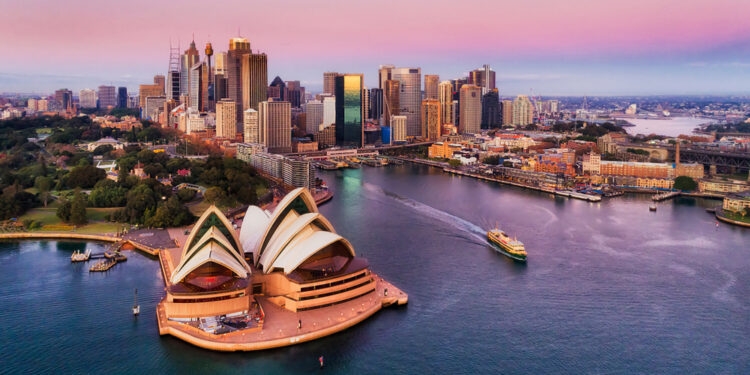The global tourism industry, once a powerful engine of economic growth and a source of livelihood for millions, was brought to a near-standstill by the events of recent years. Now, as borders reopen and travel restrictions ease, a new chapter is beginning. The industry’s resurgence is not just about vacations and leisure; it’s a critical path to Tourism’s Economic Recovery. This revival is a complex process, involving strategic innovation, technological adaptation, and a renewed focus on sustainability and safety. Understanding the forces driving this recovery, the challenges it faces, and the strategies being employed is essential for policymakers, travel businesses, and communities worldwide as they rebuild for a more resilient and vibrant future.
A Look at the Impact

To understand the path to recovery, we must first recognize the sheer scale of the disruption. The sudden halt of global travel had a profound and unprecedented economic impact on a sector that, before the crisis, contributed significantly to global GDP and employment.
A. The Numbers Behind the Decline
The statistics paint a stark picture of the industry’s vulnerability.
- Massive Economic Loss: According to the World Travel & Tourism Council (WTTC), the industry’s contribution to global GDP saw a dramatic decline, representing trillions of dollars in lost revenue. This economic void had a ripple effect, impacting related sectors like hospitality, aviation, and retail.
- Widespread Job Losses: The travel and tourism sector is one of the world’s largest employers. The crisis led to a massive loss of jobs, affecting everyone from hotel staff and tour guides to airline crews and restaurant workers. Many of these jobs were in small businesses and local communities.
- Impact on Developing Nations: For many developing nations, tourism is a primary source of foreign exchange, government revenue, and employment. The collapse of the industry had a devastating impact on their economies, leading to increased poverty and a setback in development efforts.
- The Travel and Tourism Supply Chain: The impact was not confined to hotels and airlines. It affected a vast supply chain, including food producers, artisans, transportation services, and entertainment venues, highlighting the industry’s deep integration into the global economy.
B. The Psychological and Social Toll
Beyond the numbers, the decline in tourism had a significant psychological and social impact.
- Cultural Disconnection: Travel is a powerful tool for cultural exchange and understanding. The halt in international travel limited these opportunities, fostering a sense of global isolation.
- Loss of Livelihoods: For many communities, tourism is not just a job; it’s a way of life. The loss of income and purpose had a profound impact on the social fabric of these communities.
- Uncertainty and Fear: The constant changes in travel restrictions and the fear of the unknown created an environment of uncertainty for both travelers and travel professionals, making long-term planning almost impossible.
The Path to Recovery
The current resurgence is being driven by a combination of pent-up demand, strategic policy, and technological innovation. The industry is not just bouncing back; it’s being fundamentally reshaped.
A. The Return of the Traveler
After prolonged periods of lockdown and travel restrictions, consumers are eager to travel again, a phenomenon often referred to as “revenge travel.”
- Domestic Travel Leads the Way: Initially, recovery was driven by domestic tourism, as travelers sought to explore their own countries and regions, often opting for road trips and local getaways.
- International Travel’s Gradual Reawakening: As vaccination rates increased and travel corridors were established, international travel began its slow but steady return. The demand is strong, but the process is still being managed carefully.
- The Shift to Meaningful Travel: The crisis has prompted a shift in traveler mindset. Many are now seeking more meaningful, authentic, and sustainable travel experiences, prioritizing local cultures, eco-tourism, and personal enrichment over mass tourism.
- The Rise of the Digital Nomad: The shift to remote work has created a new class of travelers—digital nomads—who can work from anywhere. This demographic is a key driver of long-term stays and a new type of travel economy.
B. Policy and Regulation
Governments and international bodies are playing a critical role in facilitating a safe and orderly return to travel.
- Standardized Health Protocols: The implementation of standardized health and safety protocols, such as proof of vaccination, testing requirements, and enhanced sanitation, is crucial for building traveler confidence.
- Travel Corridors and Bubbles: The establishment of travel corridors and “bubbles” between countries with similar health metrics has allowed for a cautious and controlled return to international travel.
- Government Support for the Industry: Governments are providing financial support, tax breaks, and other incentives to help travel businesses, particularly small and medium-sized enterprises (SMEs), survive and rebuild.
- Investment in Infrastructure: Investments in digital and physical infrastructure, such as contactless check-ins and modernized airports, are crucial for creating a more seamless and safe travel experience.
C. Technological Innovation
Technology is at the heart of the industry’s recovery, transforming every aspect of the travel experience, from booking to boarding.
- Digital Health Passports: The use of digital health passports, which securely store vaccination and testing records, is streamlining the check-in process and making international travel more manageable.
- Contactless Technology: The adoption of contactless check-ins, mobile keys for hotel rooms, and digital payment systems is reducing physical contact and improving safety.
- AI and Data Analytics: Businesses are using AI and data analytics to understand changing traveler behavior, personalize recommendations, and optimize pricing and operations.
- Virtual and Augmented Reality: Virtual and augmented reality are being used to create immersive virtual tours and experiences, allowing potential travelers to explore a destination before they visit.
- Enhanced Booking Flexibility: Booking platforms are offering more flexible booking and cancellation policies, which is crucial for building traveler confidence in an uncertain world.
Sustainability and Resilience

The recovery is not just about returning to the old model. It’s an opportunity to build a more sustainable, equitable, and resilient tourism industry for the future.
A. The Shift to Sustainable Tourism
The crisis has highlighted the need for a more sustainable and responsible approach to travel.
- Eco-Tourism and Green Travel: There is a growing demand for eco-friendly and sustainable travel options, with travelers prioritizing businesses that have a minimal environmental footprint.
- Supporting Local Communities: Travelers are more conscious of the impact of their spending and are actively seeking to support local businesses, artisans, and communities, ensuring that the economic benefits of tourism are shared more equitably.
- Ethical Travel: A growing number of travelers are prioritizing ethical travel, which involves respecting local cultures, protecting wildlife, and engaging in responsible tourism practices.
- Reducing Environmental Impact: The industry as a whole is committing to reducing its environmental impact, from airlines investing in more fuel-efficient planes to hotels implementing sustainable practices.
B. Building a More Resilient Industry
The crisis has taught the industry a valuable lesson in the importance of resilience.
- Diversification of Markets: Businesses are diversifying their markets, reducing their dependence on any single country or region.
- Digital-First Strategies: The adoption of digital-first strategies, such as online booking systems and virtual tours, has made businesses more resilient to future disruptions.
- Flexible Operations: Businesses are adopting more flexible operational models, allowing them to adapt quickly to changes in demand or new regulations.
- Investment in Staff Training: The crisis has highlighted the importance of investing in staff training, equipping employees with new skills, and building a more resilient workforce.
Challenges on the Road to Full Recovery
Despite the positive momentum, the path to a full recovery is not without its significant challenges.
A. Lingering Health and Safety Concerns
- New Virus Variants: The emergence of new virus variants and the potential for future health crises remains a threat, which can lead to new travel restrictions and a decline in traveler confidence.
- Uneven Vaccination Rates: The uneven distribution of vaccines and the varying health protocols between countries can make international travel complex and unpredictable.
- Traveler Anxiety: Many people are still anxious about traveling, particularly on long-haul flights or in crowded public spaces, which can limit the pace of the recovery.
B. Economic and Financial Pressures
- Inflation and Rising Costs: The global economic recovery is being accompanied by rising inflation and a significant increase in the cost of fuel, labor, and supplies, which is putting pressure on the profitability of travel businesses.
- High Debt Levels: Many travel businesses, particularly SMEs, have taken on significant debt to survive the crisis. Managing this debt and returning to profitability is a major challenge.
- Labor Shortages: The widespread job losses during the crisis have led to a significant labor shortage in the travel and hospitality sectors, making it difficult for businesses to meet the demand of the recovery.
- Supply Chain Disruptions: Global supply chain disruptions and a shortage of goods are impacting the ability of businesses to operate effectively and efficiently.
C. The Evolving Traveler
- Changing Demographics: Travel businesses must adapt to the new preferences of a younger, more digitally savvy, and sustainability-conscious traveler.
- The Return of Business Travel: Business travel, a key driver of profitability for many airlines and hotels, is returning at a slower pace than leisure travel, as many companies have embraced virtual meetings and remote work.
- The Shift to Experiential Travel: The demand for experiential, authentic, and sustainable travel is a major trend, but it requires a fundamental shift in the business models of many traditional tourism operators.
Conclusion
The global tourism industry is in the midst of a remarkable resurgence, a vital path to Tourism’s Economic Recovery. This revival is more than just a return to normal; it’s an opportunity for a fundamental transformation. The industry is leveraging pent-up demand, strategic policies, and technological innovation to rebuild itself, not just to its former strength, but as a more resilient, sustainable, and equitable force for the future.
While the path ahead is not without its challenges, from lingering health concerns and economic pressures to the need to adapt to a new kind of traveler, the strategies being employed are laying the groundwork for a new era of travel. This is a story of adaptation, innovation, and a renewed commitment to sustainability. The future of tourism is bright, and it will be defined by a new generation of travelers, a new approach to hospitality, and a new appreciation for the profound power of travel to connect us all. The journey is just beginning.






